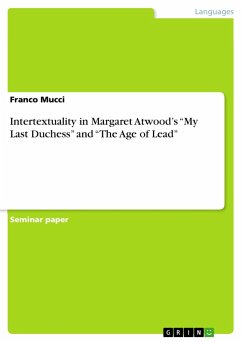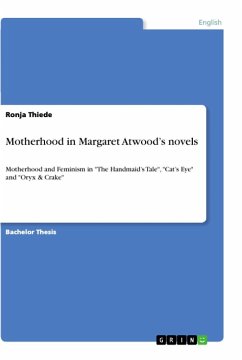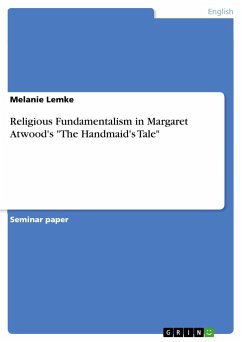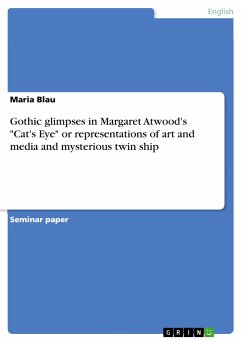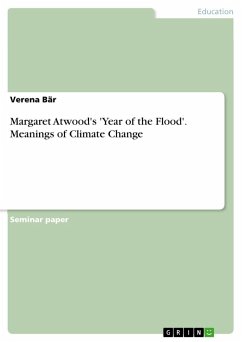Seminar paper from the year 2015 in the subject Didactics - English - Literature, Works, grade: 1,7, University of Constance, language: English, abstract: This term paper introduces the reader to the world of Margaret Atwood, an internationally well-known Canadian author. She often uses myths and prominent works as a base for her own writings and concentrates on rewriting traditional or popular versions of stories, of which many undermine objectification or even refuse women (Wisker 2012: 67). It is striking how many times Atwood has used several texts within texts or intertexts throughout her career and thus it is worth having a closer look at it (Wilson 1993: 3).In order to show how well Atwood is able to use intertextuality, the following chapter begins with Robert Browning's dramatic monologue respectively poem 'My Last Duchess', which is essential for a better understanding of the intertextuality used in Atwood's 'My Last Duchess' and important to finally understand the Duke's and the Duchess' role in both writings. The next chapter has a closer look at Atwood's short story, published in a collection of connected short stories by her called 'Moral Disorder' in 2006, which "grapples with the complicated ethics of obligation, particularly the conflict between selfishness and sacrifice that can arise within the praxis of care" (DeFalco 2011: 236).But many of the stories in the collection like 'My Last Duchess' also focus on the socialization of gender, a very central subject to Atwood, particularly the short stories set in the 1950s and 1960s, a time when gender was a principally discussed social issue (Wisker 2012: 165). In addition, as we will see in the short story 'My Last Duchess', Atwood regularly reverses the hero's gender in order to alter the role of women from objects to subjects and she also doubles roles in order to make the same person look like a rescuer and a person being rescued (Wilson 1993: 32).

